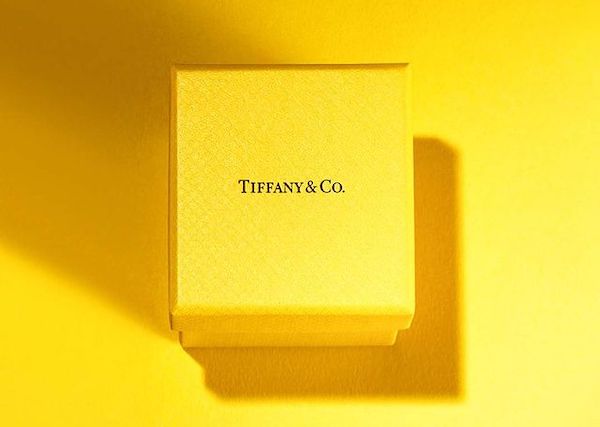It may seem impossible to be covered in a long layer of clothing in Qatar – newsflash, it’s not! You can still wear the perfect fabric for the country’s 40 to 45 degree Celsius summer weather! You can still follow the general dress code policies in the country while feeling cool and looking fashionable under the hot, blazing sun.
Here are some facts and information on some of the breathable fabrics perfect to wear during summer:
- Cotton
When it comes to outdoor activities, cotton often gets a bad rap in the apparel industry. When wet (and it can easily become saturated on humid days), it usually stays wet. Cotton, on the other hand, is long-lasting, soft, lightweight, absorbs sweat, allowing heat to escape from the body and keeping you cool, highly breathable, making it an excellent summer casual option. And, while cotton is one of the most widely available fabrics, it is critical to select manufacturers who use organic cotton that is responsibly sourced. Moreover, it is a great fabric for summer and hot weather. It is not only affordable and widely available, but it is also beneficial in hot weather. Cotton comes in endless styles and colours which makes it easier for anyone to find a garment fit to pretty much any need, it varies to different qualities.
Though there are some downsides about cotton, it gets wrinkly and so a cotton-polyester blend would be perfect where you don’t have to iron it.
Seersucker
Seersucker, a member of the cotton family, is a thin, lightly puckered fabric that is extremely lightweight. This material, which is popular for garden parties and boating attire, is also an excellent choice for summer dresses.
- Linen
Linen is another excellent option for a breathable fabric to wear in hot weather. It is also lightweight and loosely woven, allowing heat to escape from the body. This natural, luxurious, and long-lasting material is made from flax plant fibers. Historically, linen clothing has been associated with society’s upper classes. This was due to the time-consuming process of creating the expensive fabric.
Linen is another excellent choice for a breathable fabric to wear in hot weather, making it an ideal fabric for summer wear. It is also lightweight and loosely woven, allowing heat to escape from the body. It quickly absorbs moisture and dries, keeping you cool and dry. It is stiff, but this also means that it does not adhere to your body. Linen wrinkles a lot, but many people like it and see it as part of the style and look of linen.
- Rayon
Rayon is a synthetic fabric made of cotton, wood pulp, and other natural or synthetic fibers. It was created as a less expensive alternative to silk (which also makes silk a good summer fabric). Rayon has very thin fibers, allowing it to breathe more than other fabrics and giving it a lightness that keeps it from sticking to the body in hot weather. Because it is so comfortable and cool to wear, rayon is an excellent choice for sportswear and summer dresses. While rayon is a great fabric for hot weather, it can shrink when washed in hot water. Although rayon can be hand washed in cold water, it is best to dry clean it to avoid shrinkage or damage.
Micromodal
This is a type of rayon with a high wet modulus. It’s popular for undergarments because it’s extremely soft and long-lasting. It is a natural fabric made of beech tree wood pulp, which contributes to its breathability. Because Micromodal is 50% more absorbent than cotton, dampness is wicked away from the skin, leaving you dry.
Downside: The disadvantage is that micromodal is prone to pilling and stretching, which is why it is most commonly used for underwear and pajamas.
- Denim/Chambray
Denim is made of tightly woven cotton, so it is breathable and absorbs sweat like cotton. Denim, on the other hand, is a heavier fabric, and why some people prefer chambray for summer clothing. Chambray is frequently described as imitation denim, which means that it has all of the same benefits as denim but is much lighter in weight.
- Synthetic
Because there are so many fabric options, this is most likely the most diverse group of fabric options. We’ll go over a few of them below, as well as a few proprietary iterations that are making waves in the fabric world. The majority, if not all, synthetic materials used in clothing are petroleum-based and thus non-renewable. There are, however, many initiatives that source recycled products such as plastic water bottles, fishing nets, and other plastic waste to find new life in the apparel industry.
Take note: Other textiles in this larger list are usually mixed with synthetic fibers to improve the durability and longevity of the product.
- Polyester and Nylon
Polyester is the most common synthetic material. It’s softer, more comfortable, and simply more appealing than previous generations of the fabric. Because it is extremely durable and long-lasting, it is ideal for use in gear and apparel. The breathability of a fabric is defined by how closely it is woven as well as the size of the yarn.
Nylon is another petroleum-based product that is extensively used in a range of different of clothing options, though to a smaller extent than polyester. Polyester and nylon are frequently able to give a fabric that uses a combination of both.
- Silkweight
This material is composed of 88 percent recycled polyester and the rest comes of new polyester fiber and spandex.
- Flash Dry
This proprietary fabric technology is intended to control moisture while moving it as quickly and efficiently as possible away from the body.
- Merino Wool
We’re not talking about your father’s wool sweater or that wool turtleneck that probably drove you insane as a kid until you were able to free yourself from its itchy embrace. Merino wool is most often used in base layers and winter apparel. However, its natural properties make it the ideal choice for all summer treks, travel, and exploring the urban jungle.
- Bamboo
This super fabric is made from natural fibers, is antimicrobial by nature (which also helps it fight odors if you sweat a lot and need a little extra help), and is highly sustainable. Pandas also enjoy it as a food source. While bamboo can stand alone in the fabric world, it can also be combined with a variety of other products, such as cotton and synthetic fibers, to create a broader range of products.
- Silk
Silk is extremely soft and luxurious, as well as highly breathable and lightweight. It is most commonly used in the manufacture of underwear and is quite often seen in high-end casual wear. While this luxurious fabric has many advantages, it is a delicate material that is usually hand-washed.
Share this article with your friends and families who are looking for the perfect fabric to wear this summer!
Sources:
By: Yohana S. M. Manurung






Leave A Comment
You must be logged in to post a comment.